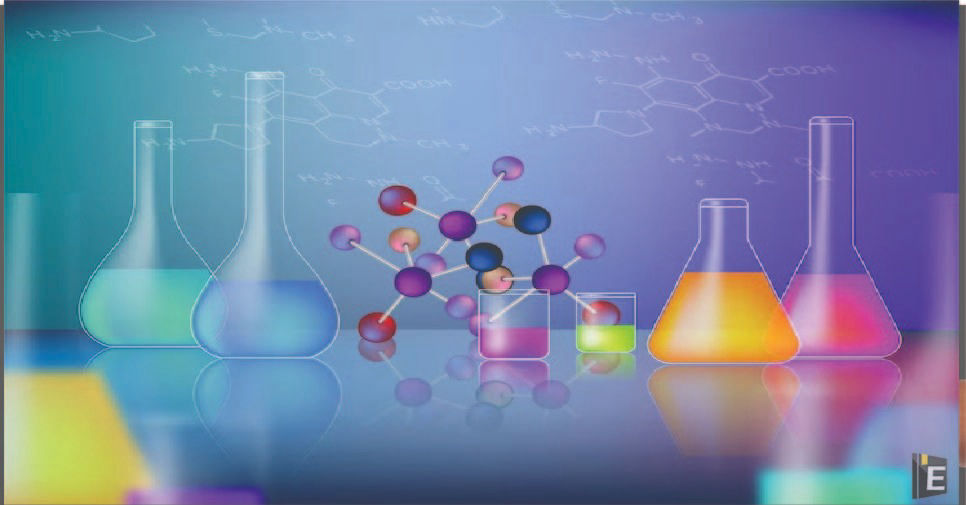Chemistry GK Quiz Questions

The electrons located in the highest energy level of an atom are called ___.
(A) Valence protons
(B) orbital protons
(C) valence electrons
(D) valence electrons
Correct Answer : C
Explanation :
The outermost orbital shell of an atom is called its valence shell, and the electrons present in the valence shell are called valence electrons. The valence electrons of an atom are electrons with higher energy and hence they are more reactive.
Ethylene is a __molecule.
(A) polar
(B) ionic
(C) covalent
(D) non-polar
Correct Answer : D
Explanation :
Ethylene (IUPAC name: ethene) is a hydrocarbon whose molecular formula is C2H4 or H2C=CH2. It is a colorless, flammable gas with a mild sweet musky odor. Ethylene is used extensively in chemical industries.
Loaders contain ___.
(A) Same mass numbers but different atomic numbers
(B) Different weight numbers but same numbers
(C) Same weight and atomic numbers
(D) Different weights and atomic numbers
Correct Answer : A
Explanation :
Nuclei are classified based on the number of protons (atomic number) or the total number of nucleons (mass number):
Isotopes: Atoms of an element which have the same atomic number but different mass numbers are called isotopes. All isotopes have similar chemical properties.
Isobar: Nuclei which have the same mass number (A) but a different atomic number (Z) are called isobar.
Even-neutronic: Nuclei having equal number of neutrons are called even-neutronic. For them both atomic number (Z) and mass number (A) are different, but the value of (A – Z) is the same.
What differentiates two electrons in an orbit?
(A) Magnetic quantum number
(B) Spin quantum number
(C) fundamental quantum number
(D) Azimuth quantum number
Correct Answer : B
Explanation :
The spin of two electrons located in the same orbital is found to be opposite, hence the spin between them is known by the quantum number.
What are the components of the nucleus of an atom?
(A) only proton
(B) Proton and neutron
(C) Neutron and electron
(D) only neutrons
Correct Answer : B
Explanation :
An atom has three parts: protons, electrons, and neutrons. The nucleus contains protons and neutrons and electrons revolve around the nucleus. The proton has a positive charge, the electron has a negative charge and the neutron has no charge.
The range of pH scale is __.
(A) 1 to 14
(B) 1 to 7
(C) 0 to 14
(D) 0 to 7
Correct Answer : C
Explanation :
The pH scale ranges from 0 to 14.
If pH < 7 then the solution is acidic. If pH > 7 then the solution is alkaline. If pH = 7 then the solution is neutral.
What are counterweights?
(A) Elements which have the same atomic number but different masses.
(B) Elements which have different atomic numbers but same mass
(C) Elements which have different atomic numbers and different masses
(D) Elements which have the same atomic number and the same mass
Correct Answer : B
Explanation :
Isobar: Nuclei which have the same mass number (A) but a different atomic number (Z) are called isobar. Even-neutronic: Nuclei having equal number of neutrons are called even-neutronic. For them both atomic number (Z) and mass number (A) are different, but the value of (A – Z) is the same.
Who had discovered the electron?
(A) E. Goldstein
(B) J. J. Thomson
(C) Ernest Rutherford
(D) J. chadwick
Correct Answer : B
Explanation :
J.J. Thomson:
Discovery of electron J. J. Thomson did it in 1897. Hence, option 4 is correct.
An electron is a low-mass and negatively charged particle.
He won the Nobel Prize in 1906 "for his theoretical and experimental investigations on the conduction of electricity by gases."
The process of gaining electrons is called.
(A) Oxidation
(B) Reduction
(C) Radiation
(D) Both oxidation and reduction
Correct Answer : B
Explanation :
Reduction is a chemical process that involves the gaining of electrons by an atom.
An atom is __.
(A) The smallest known particle of matter
(B) The smallest particle of a gas
(C) The smallest indivisible particle of an element that can participate in a chemical change
(D) A charged particle
Correct Answer : C
Explanation :
An atom is made up of three particles, namely neutron, proton and electron. Hydrogen has no neutrons. Every atom has a nucleus that binds one or more electrons around itself.



